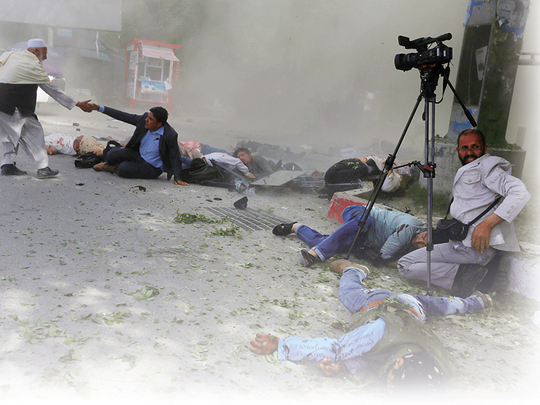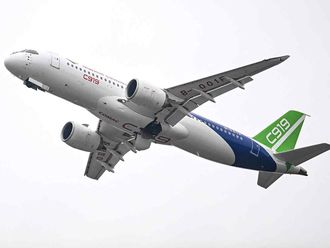
Twin bombings in Kabul that killed nine journalists on Monday were the deadliest attack involving media in Afghanistan since at least 2002, and one of the most lethal ever worldwide, according to the Committee to Protect Journalists.
A 10th journalist, from the BBC’s Afghan service, was shot and killed in a separate attack outside Kabul. The bombings were the latest spasm of a conflict that began more than a decade and a half ago and shows no sign of ebbing.
ALSO READ: Tales of fear and survival
The brazen attack came just days before the UN World Press Freedom Day on May 3 and puts a spotlight on the dangers journalists face while doing their jobs. According to Reporters Without Borders, 65 journalists were killed worldwide in 2017. While that number was the lowest in a decade, 32 journalists have been killed so far in 2018, according to the International Federation of Journalists — and the year still has eight months left to go, making it potentially the deadliest year in decades for journalists.
According to the 2018 World Press Freedom Index, compiled by Reporters Without Borders (RSF), targeted attacks and hostility towards media workers and journalists is on the rise. Published annually by RSF since 2002, the World Press Freedom Index measures the level of media freedom in 180 countries. The 2018 report shows that many elected leaders of democracies see the media, not as an essential part of society and sovereignty, but as “enemies of the people” as termed by US president Donald Trump. The US itself has slid by two positions to rank 45 on the list. Verbal insults and bashing aside, journalists are at increasingly high risk of physical and fatal harm as well.
In this year’s index, Norway is first for the second year in a row as the best for free reporting by press workers. Unsurprisingly, North Korea has been in the last position for two years. Even though Norway and Sweden, among other Nordic nations, rank high, the global decline in press freedom has affected these countries as well.
Show of defiance in Kabul
In the Afghan capital of Kabul, journalists were shaken but defiant Tuesday, vowing to continue reporting on the bloody conflict. The deadly assaults have rocked the tight-knit journalist community. Many of them are close friends as well as colleagues who back up one another as they work in an increasingly hostile environment.
Hours after the suicide blasts, dozens of Afghan news executives gathered at the site in a public display of defiance to militants. They condemned the government’s failure to provide security for journalists, particularly where secondary blasts are a constant concern. The message was “if they destroy a line of journalists, there’s going to be a longer line back at the scene within a few hours,” Tolo News director Lotfullah Najafizada said.












